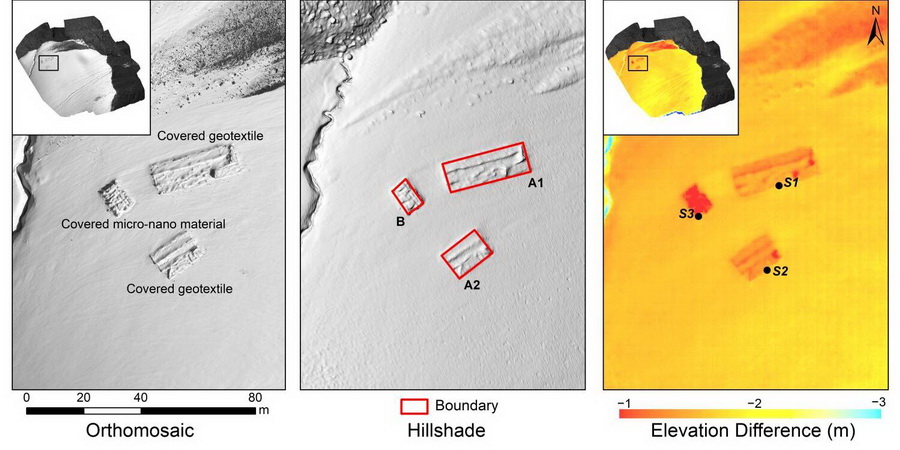Glacier is experiencing fast and significant changes under global warming. Glacier shrinkage significantly impacts global sea level, regional water cycles, ecosystems, and natural hazards.
Many studies have considered glacier changes and the mechanisms driving such changes. However, few studies have focused on mitigating glacier ablation.
Recently, a research team from the Northwest Institute of Eco-Environment and Resources of the Chinese Academy of Sciences conducted the evaluation of glacier cover efficiency for melt reduction on the Urumqi Glacier No. 1, Tien Shan, China.
Related Results were published in Remote Sensing.
By combining two high-resolution digital elevation models derived from terrestrial laser scanning and unmanned aerial vehicles, albedo, and meteorological data, the researchers quantified the glacier ablation mitigation under three different cover materials.
The results showed that material-covered areas could slow down glacier melting by approximately 29%-56% compared with uncovered areas.
Besides, the researchers also found that the nanofiber material (56%) showed higher efficiency than the geotextiles used in the experiment.
The method of artificial reduction of glacial ice melt provides a scientific and practical basis for decision-making on mitigating and adapting to climate change.








